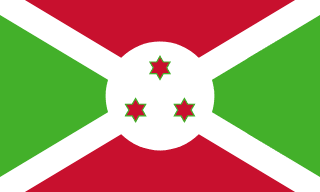Burundi - Environment

As far as the environment of Burundi is concerned, there have been . As for nvironment - international agreements, we have; .
About the environment of Burundi
| Climate | We have equatorial; high plateau with considerable altitude variation (772 m to 2,670 m above sea level); average annual temperature varies with altitude from 23 to 17 degrees Celsius but is generally moderate; average annual rainfall is about 150 cm with two wet seasons (February to May and September to November) and two dry seasons (June to August and December to January) |
|---|---|
| Revenue from forest resources | |
| Revenue from coal | |
| Waste and recycling | Municipal solid waste generated annually: 1.872 million tons (2024 est.) |
| Total renewable water resources | 12.536 billion cubic meters (2022 est.) |
| Major rivers (by length in km) | |
| Total water withdrawal | |
| Municipal | 43.1 million cubic meters (2022 est.) |
| Industrial | 15 million cubic meters (2022 est.) |
| Agricultural | 222 million cubic meters (2022 est.) |
| Land Use | |
| Agricultural land | 82.8% (2022 est.) |
| Agricultural land: arable land | arable land: 50.4% (2022 est.) |
| Agricultural land: permanent crops | permanent crops: 13.6% (2022 est.) |
| Agricultural land: permanent pasture | permanent pasture: 18.8% (2022 est.) |
| Forest | 10.9% (2022 est.) |
| Other | 6.3% (2022 est.) |
| Urbanization | |
| Urban population | 14.8% of total population (2023) |
| Rate of urbanization | 5.43% annual rate of change (2020-25 est.) |
| Major urban areas (Pop) | 1.207 million BUJUMBURA (capital) (2023). |
All Important Facts about Burundi
Want to know more about Burundi? Check all different factbooks for Burundi below.









